Hamburg
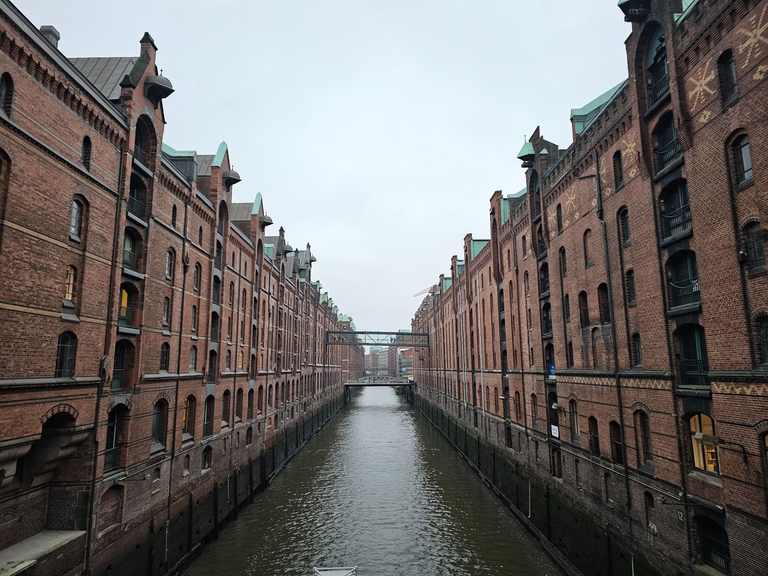
English °
Deutsch °

Hamburg has seen the emergence of a new district in recent years.
The HafenCity with the Speicherstadt.
The Speicherstadt has been around for a very long time and has been extensively remodeled. The most famous building there is the Elbphilharmonie concert hall.
But the rest is no less worth seeing. You can argue about whether it all makes sense, but you should definitely see it when you visit Hamburg.
However, it will probably take at least another 15 to 20 years before everything that is currently planned is completed. And it remains to be seen whether everything will actually be completed. The Elbtower is already in the headlines again because we don't really know how and whether it will go ahead.
The Austrian Signa Holding will probably no longer be able to finance it, but as is the case with Hamburg, the city will somehow be the financial backer.
It is currently expected to cost 950 million.
If I now take the cost explosion of the Elbphilharmonie as a benchmark, it will end up being around 10 billion euros. Never mind. Each inhabitant of Hamburg would then have to pay 5431 euros. If we spread that across all German citizens, everyone would only have to pay 125 euros. A bargain, so to speak. In return, we would have a tower, which would probably be occupied by a bank where only people with enough capital are allowed in. So probably not me. Then I would like my 125 euros to be distributed among the other 80 million Germans.
Well, I'm digressing a little. Let's get back to the topic.
HafenCity:
HafenCity was officially opened in 2008. It is located in the Hamburg Mitte district and consists of the Große Grasbrook and Speicherstadt areas.
This part of the city is 157 hectares in size and by 2030, apartments for 14,000 people, 3,000 hotel rooms and jobs for up to 45,000 people are to be built. It is also expected that around 50,000 customers and tourists will visit the area every day.
Anyone who knew Hamburg before the turn of the millennium will certainly remember the old Speicherstadt. Brick buildings and abandoned warehouses could be marveled at back then. The brick buildings are still there, but the buildings are now also being used after renovation.
In the 15th century, this was also the place of execution where the pirate Klaus Störtebecker was executed. More on this later.
If you walk there from the harbor and the jetties, you will pass this police station.
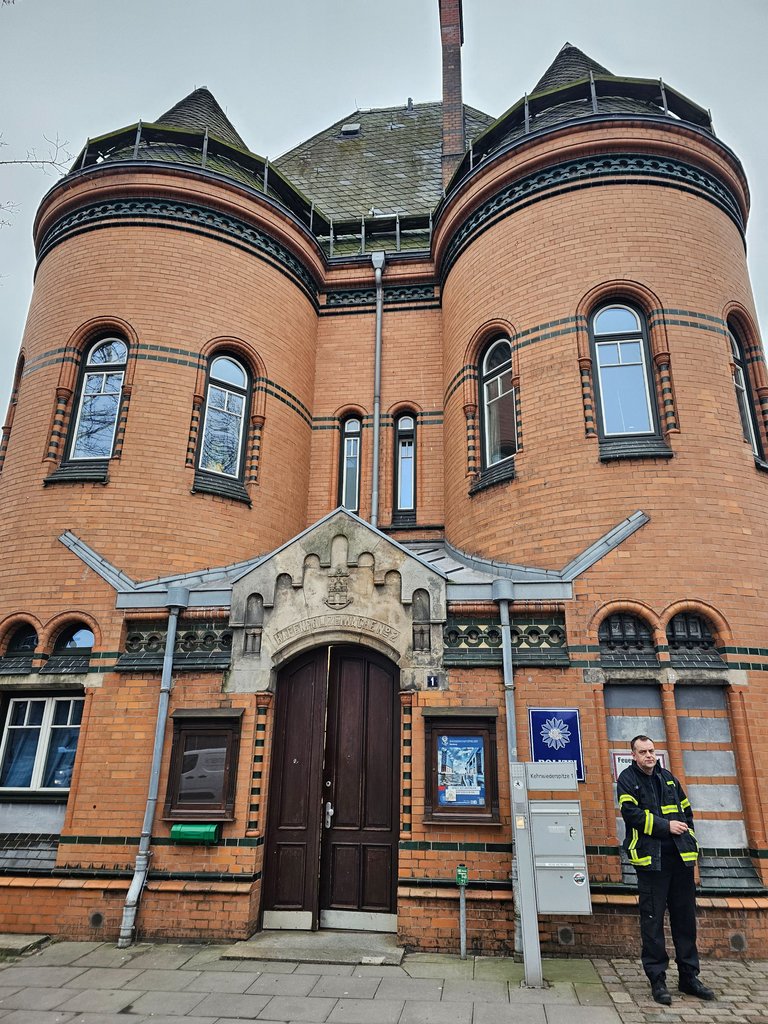
Here you can already get a good impression of what was built there.
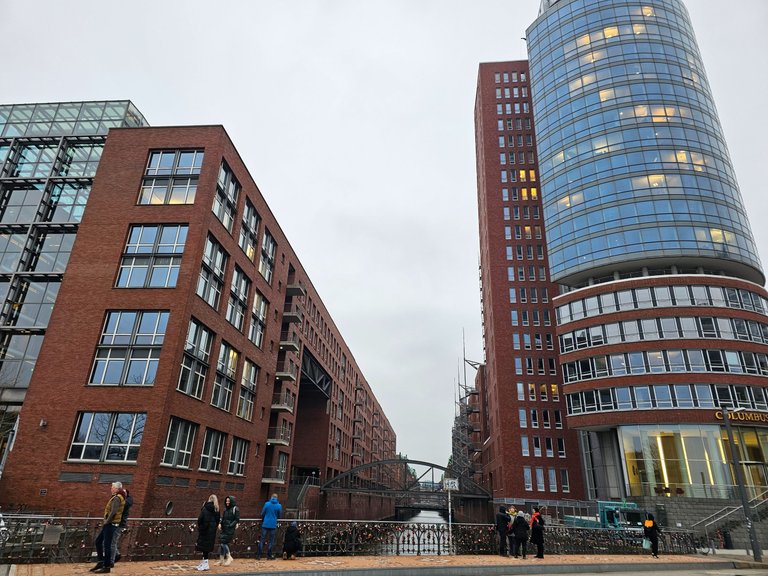
Most of the brick buildings have been preserved and have been or are being renovated. The streets have been renewed.
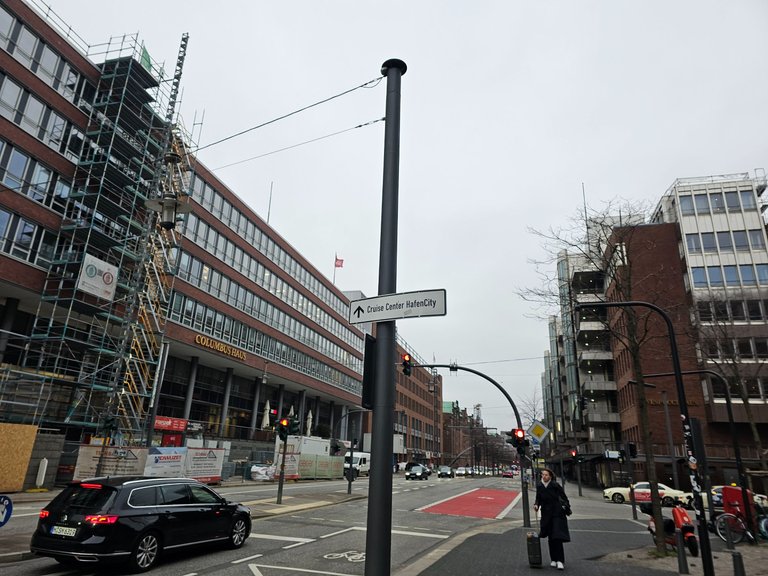
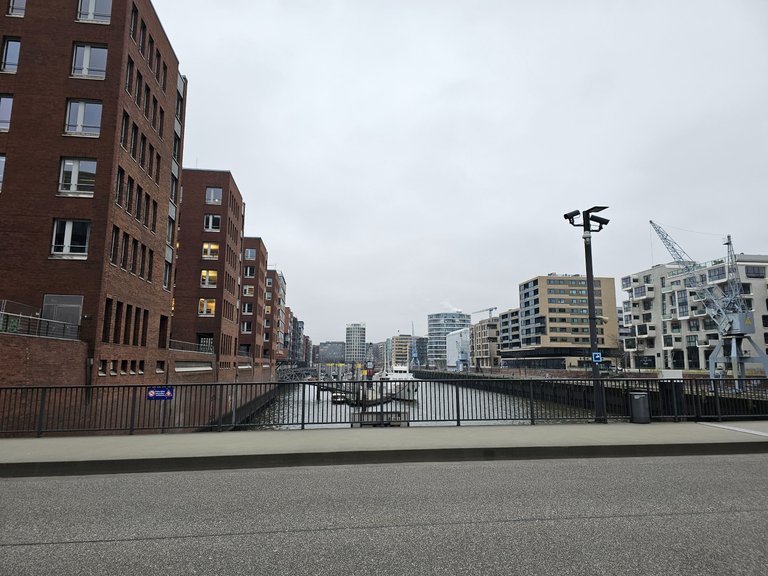
Something that is not noticeable at first glance are the pedestrian walkways on the second floor. On this street, you can easily walk a few meters above the traffic along the houses through a large part of the city.
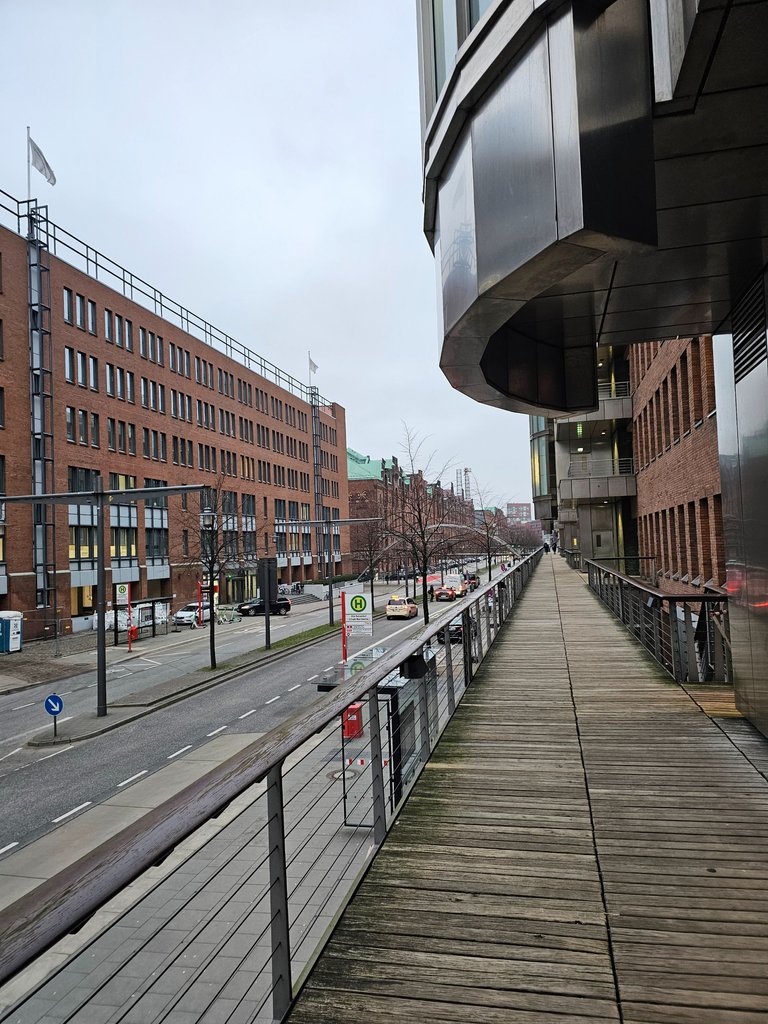
It was very impressive that you can really get from A to B without having to watch out for cars. Bridges have also been built especially for pedestrians.
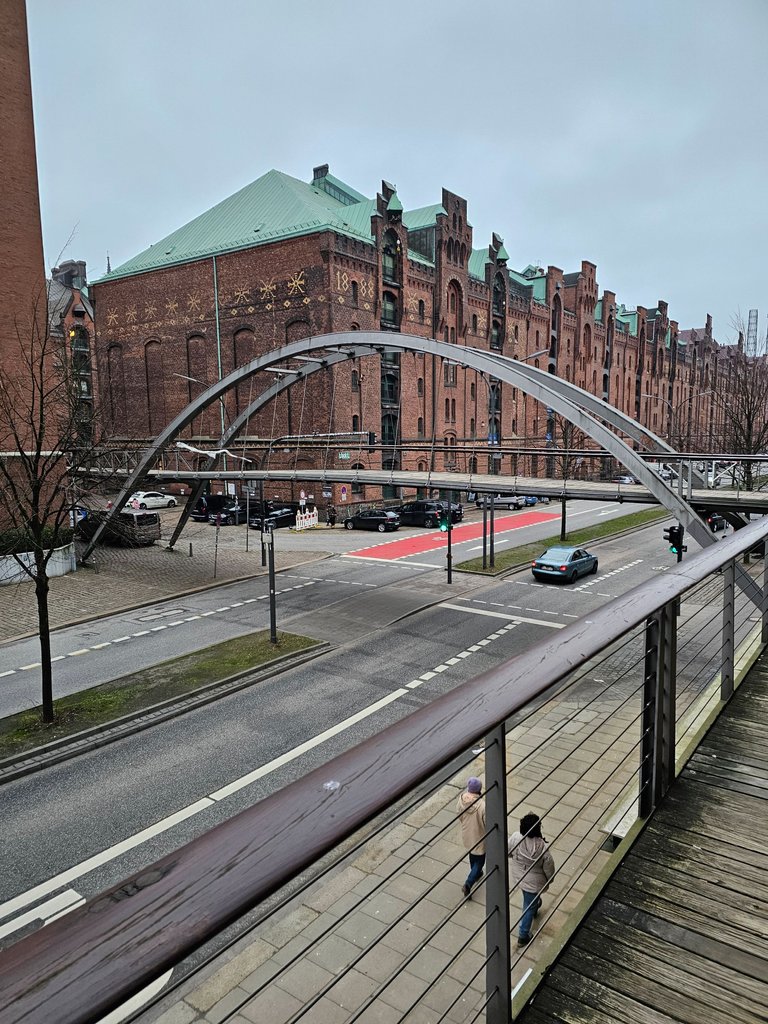
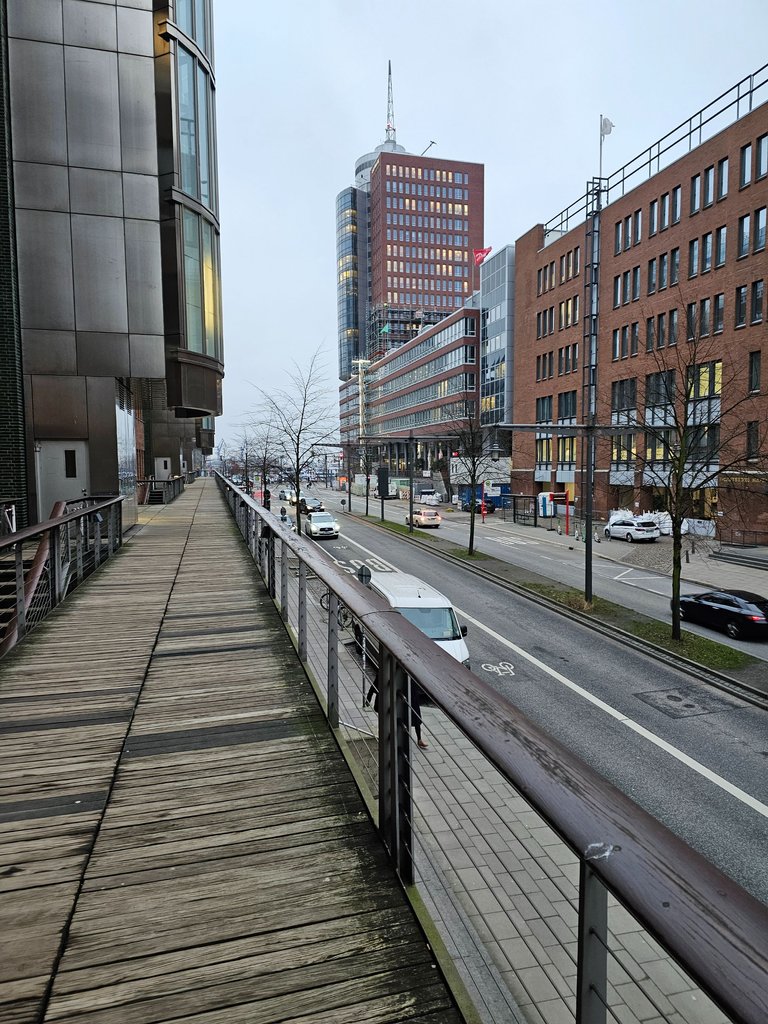
For me as a cyclist, it was fantastic to see how cycle lanes can be created on new roads in a city center. As you can see, the cycle path is almost wider than the road for cars.
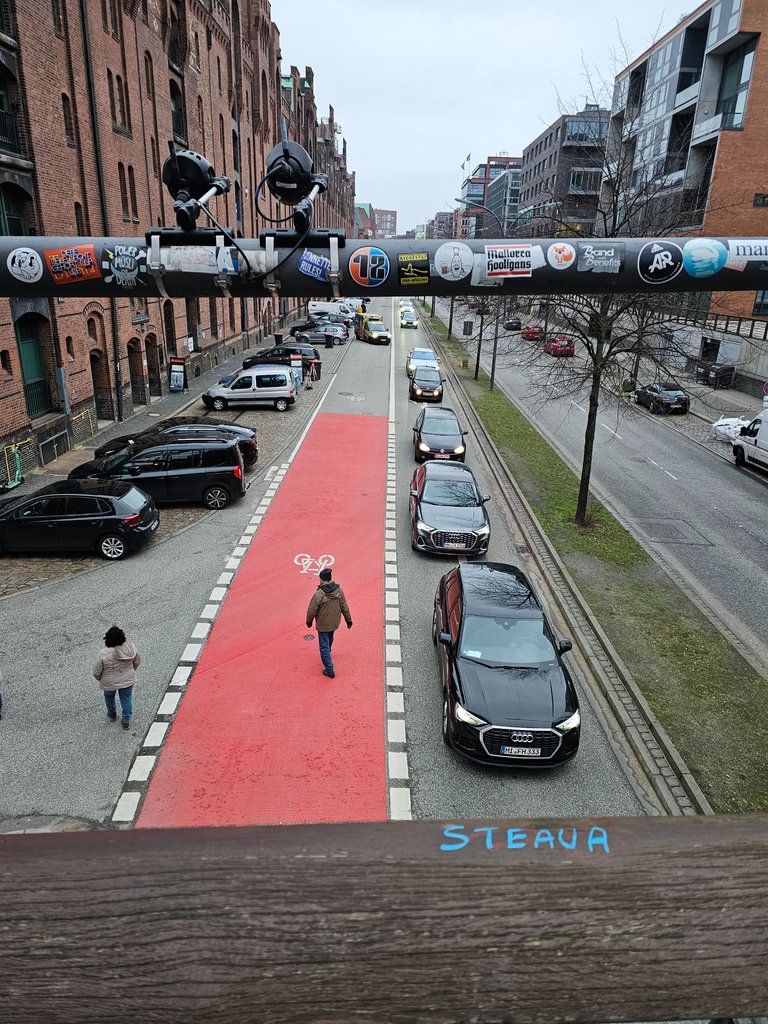
There are canals between the old brick houses, which can be crossed by a bridge. Ships used to sail here and unload their goods.
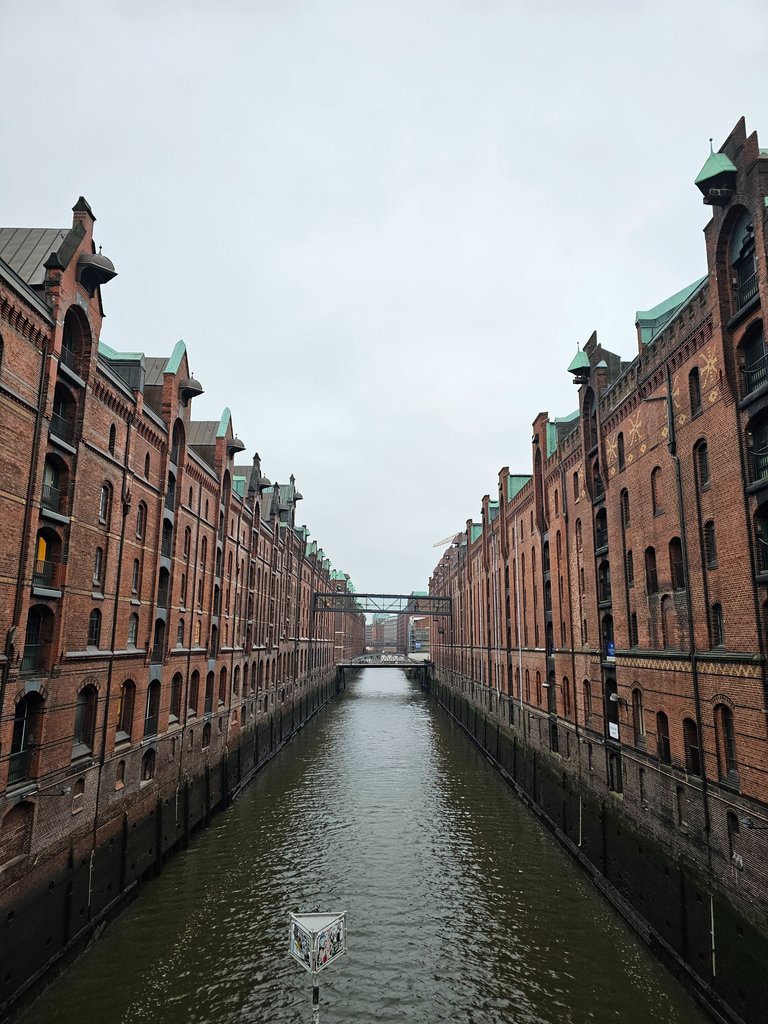

Now offices and apartments have been built there.
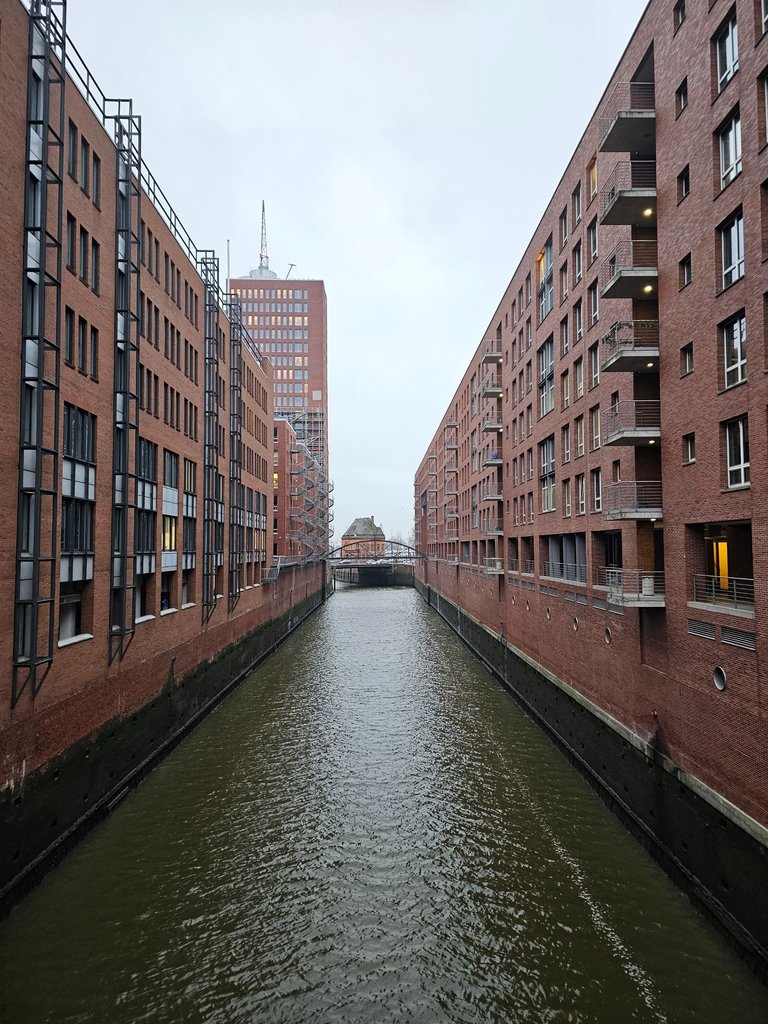
This is the border between HafenCity/Speicherstadt and the city center as it has always been.
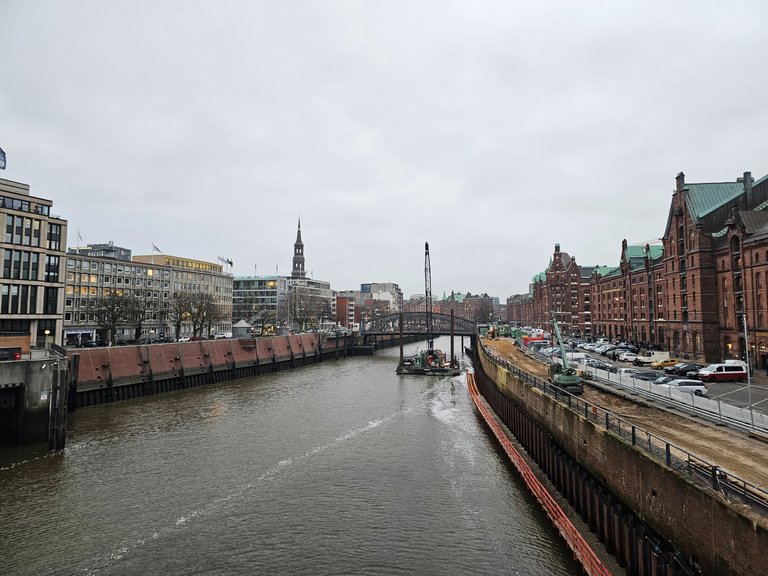
Architecturally, HafenCity goes in almost all directions. In addition to the brick buildings, there are also futuristic-looking buildings.
Depending on what you like more.
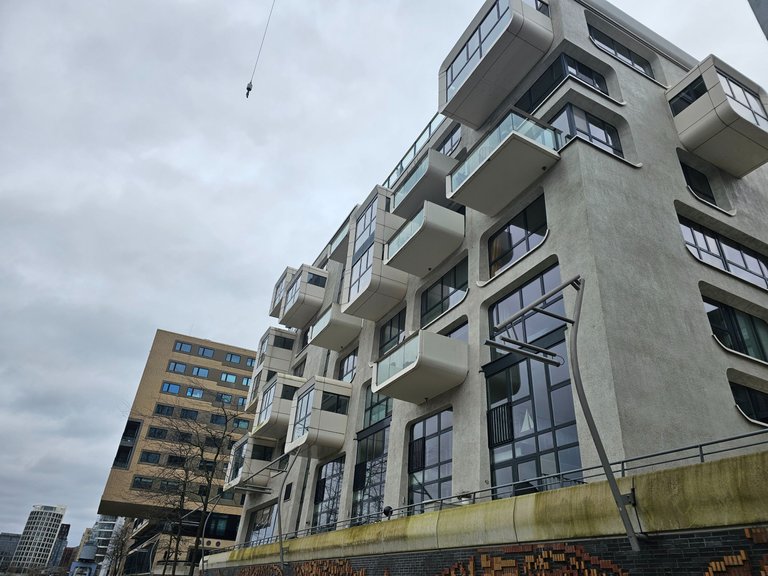
The further you walk, the more the cityscape changes. This is roughly in the middle of HafenCity.
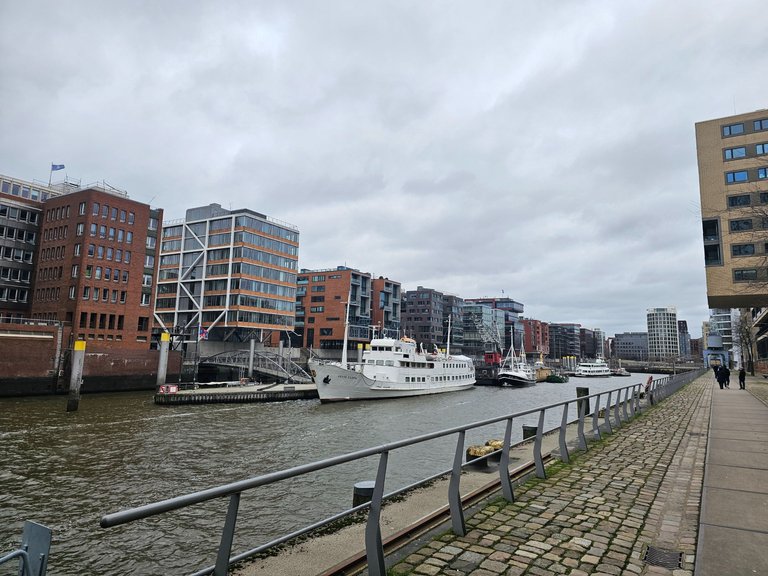
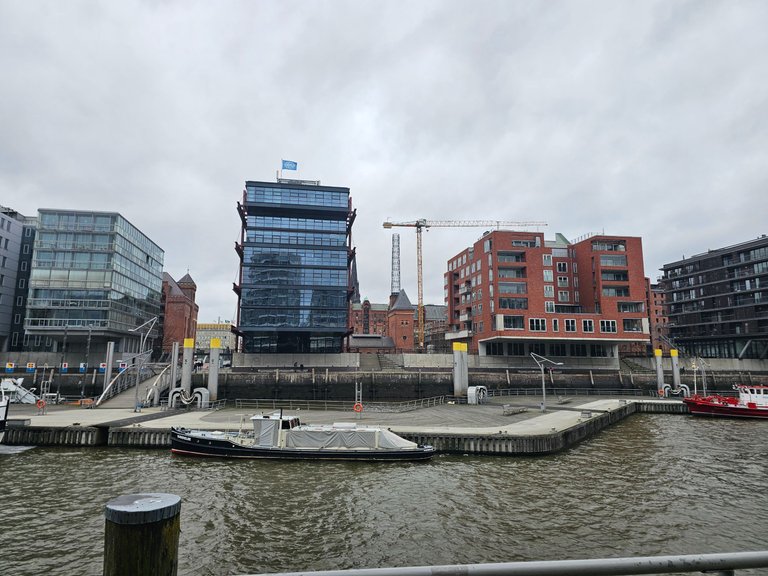
In my younger years, when there was still a Berlin Wall and the capital of Germany was still called Bonn, Hamburg was the city to be in.
Today, this district is probably an attempt to reconnect with those days. However, I have to admit that this district seemed almost deserted compared to the other areas of Hamburg.
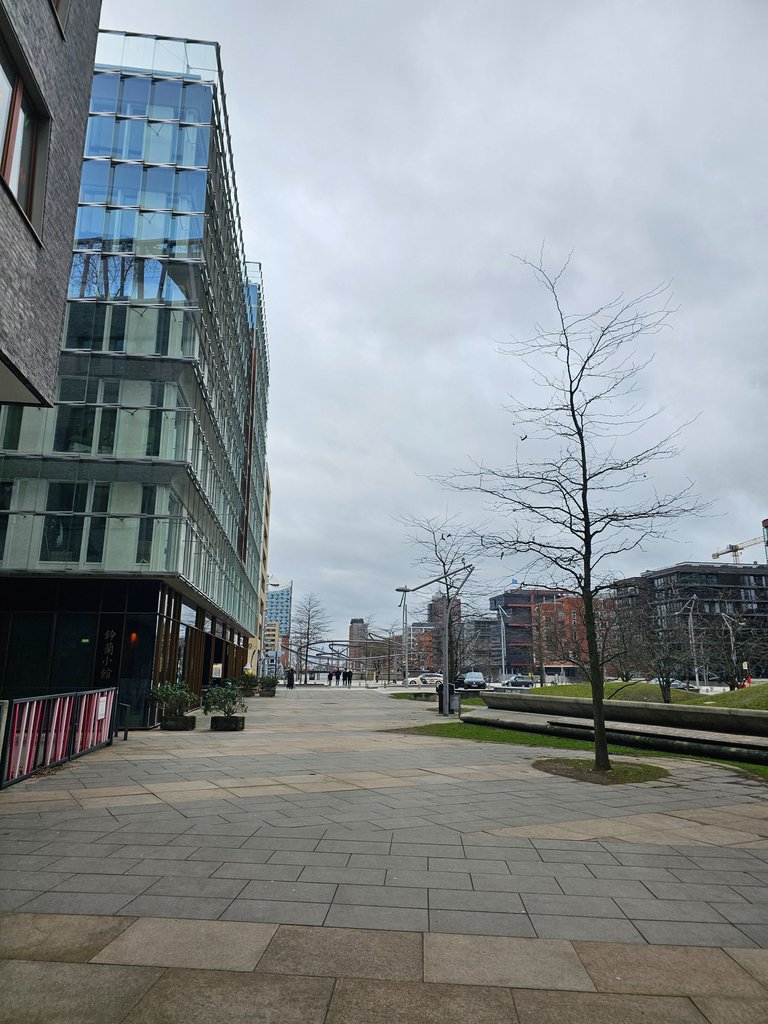
My explanation for this is that everything just seems too expensive here. It just hasn't grown slowly, it's been built out of the ground.
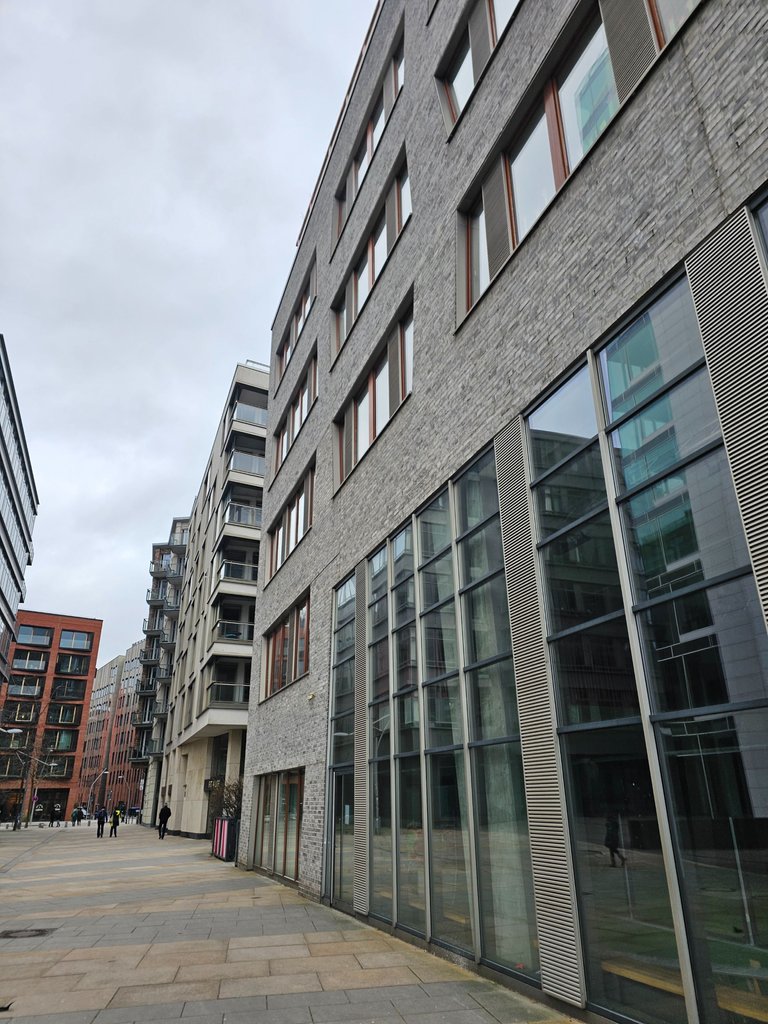
Everything looks clean but not lively. It will probably take a few more years to get there.
However, I think it's just too expensive to live here. Rich snobs don't liven up a city by living in their luxury apartments and not going out on the street.
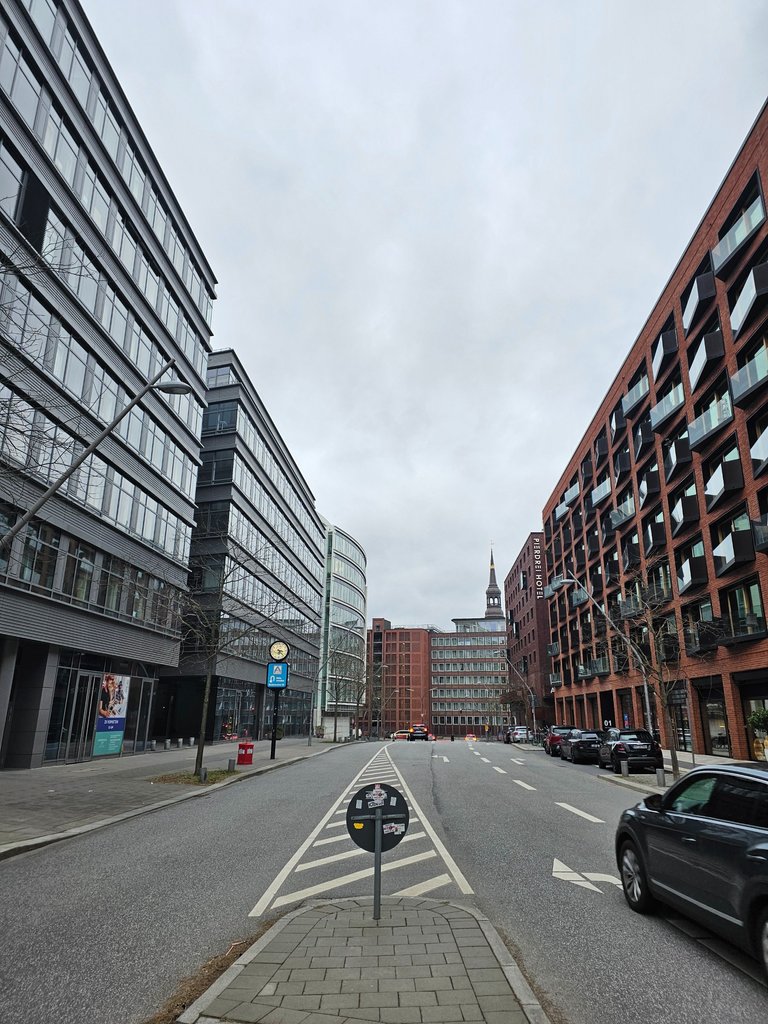
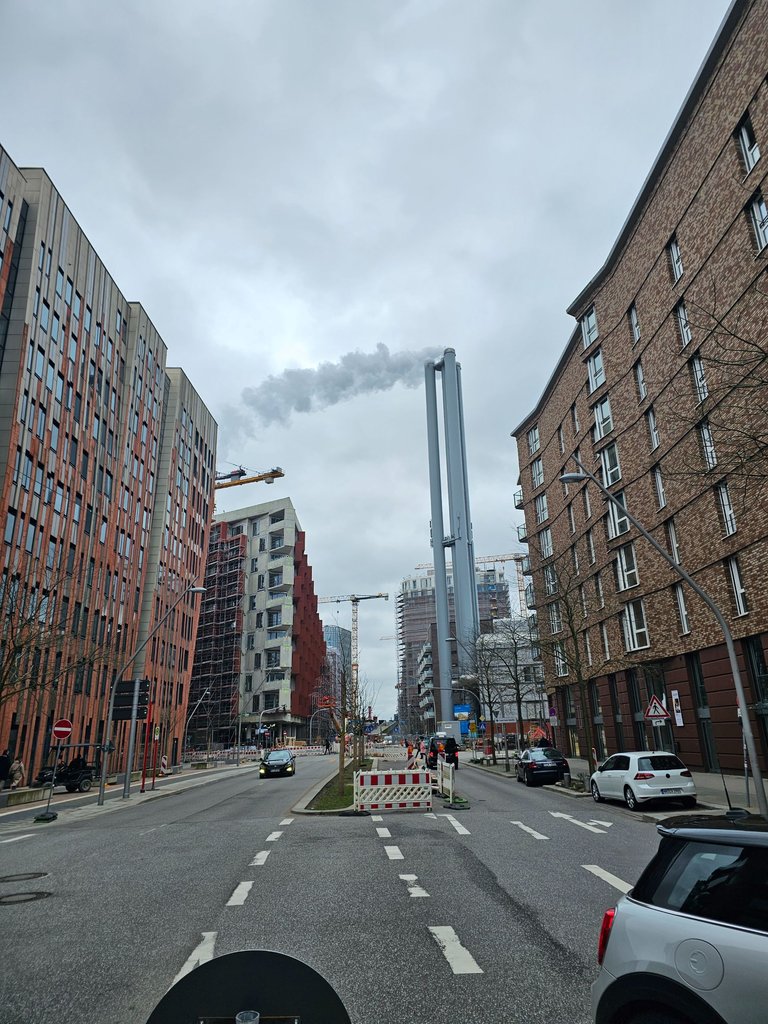
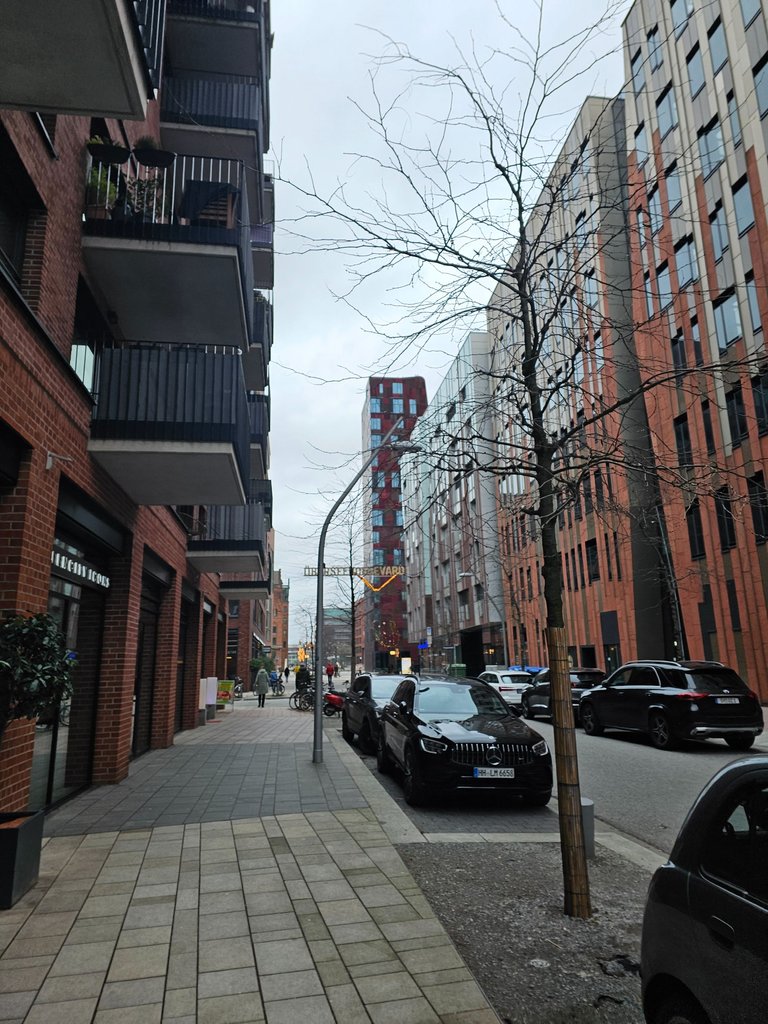
At the entrance of this house is Sumatra Kontor. Perhaps the exterior of the house is meant to be reminiscent of the rainforest on Sumatra. Brown like tree trunks at the bottom, light like the sky at the top.
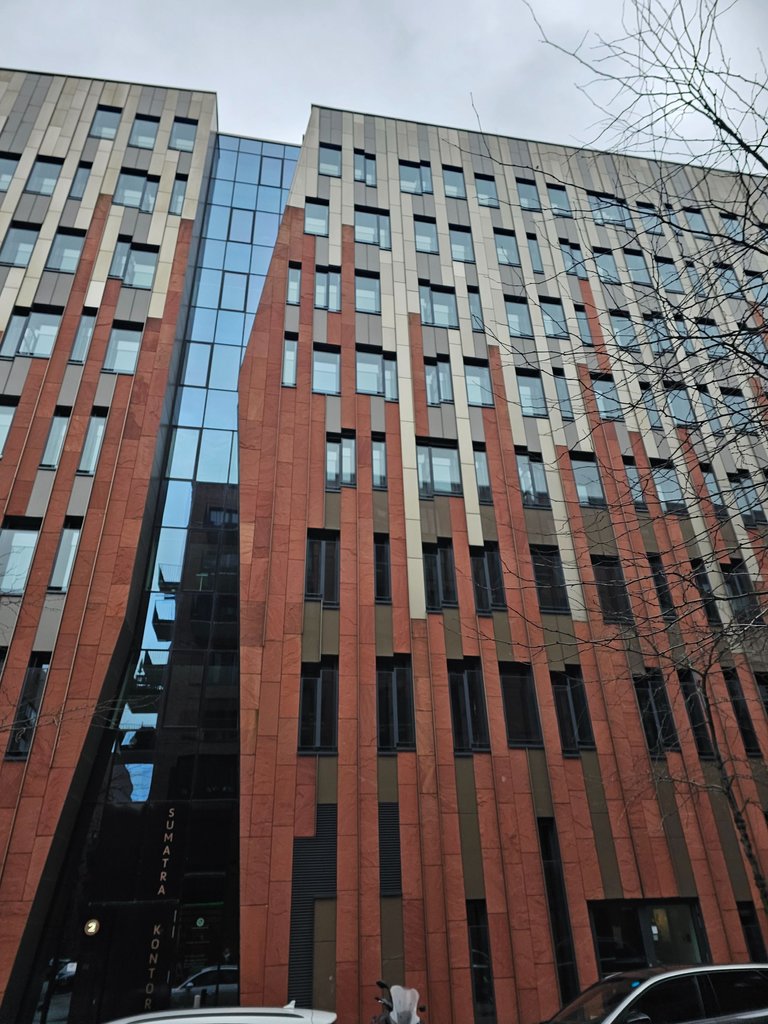
ÜberseeBoulevard stands on this street. The people and tourists are still missing.
To be fair, I have to say that we were here on a Sunday. It might be a bit busier on a weekday.
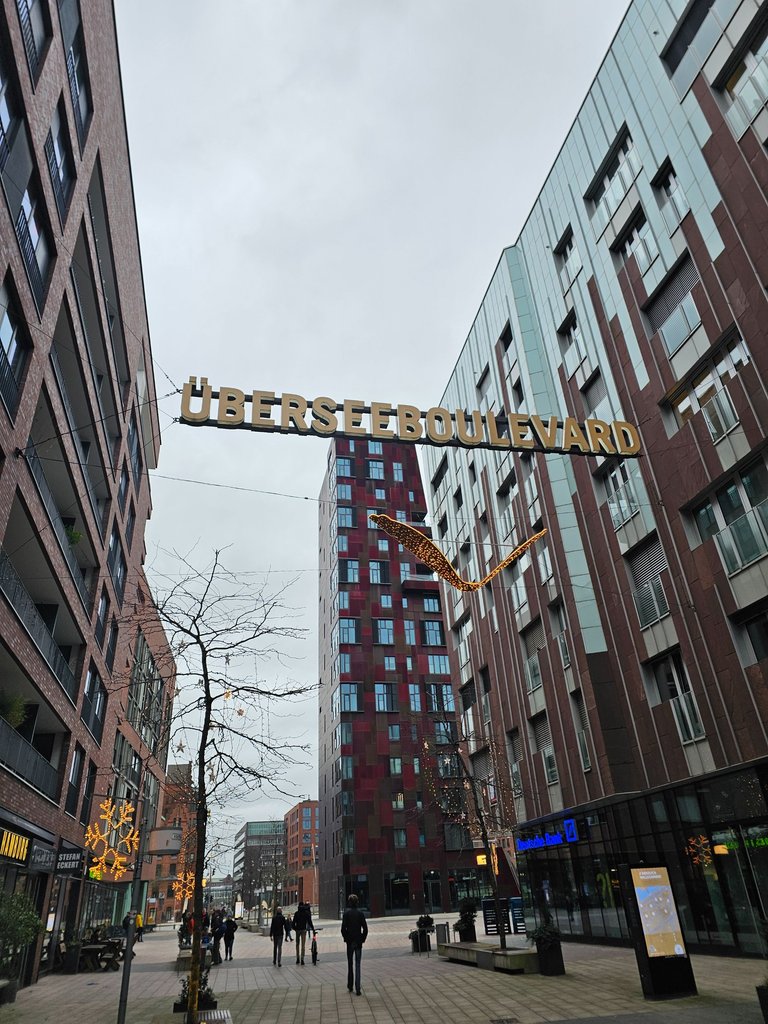
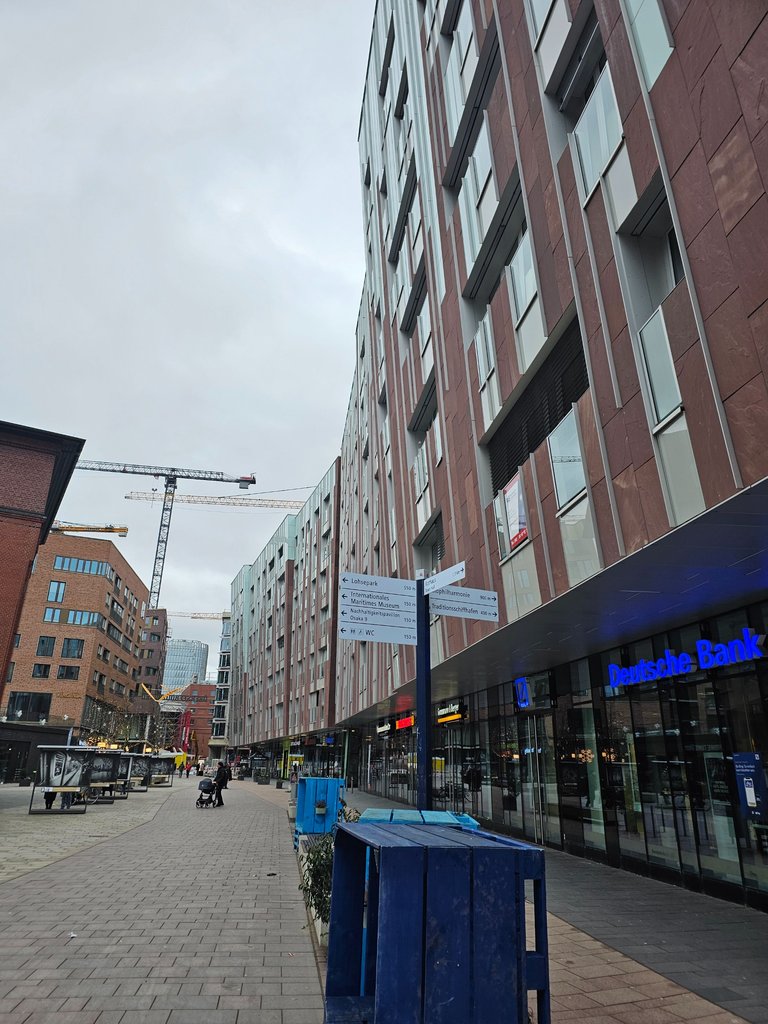
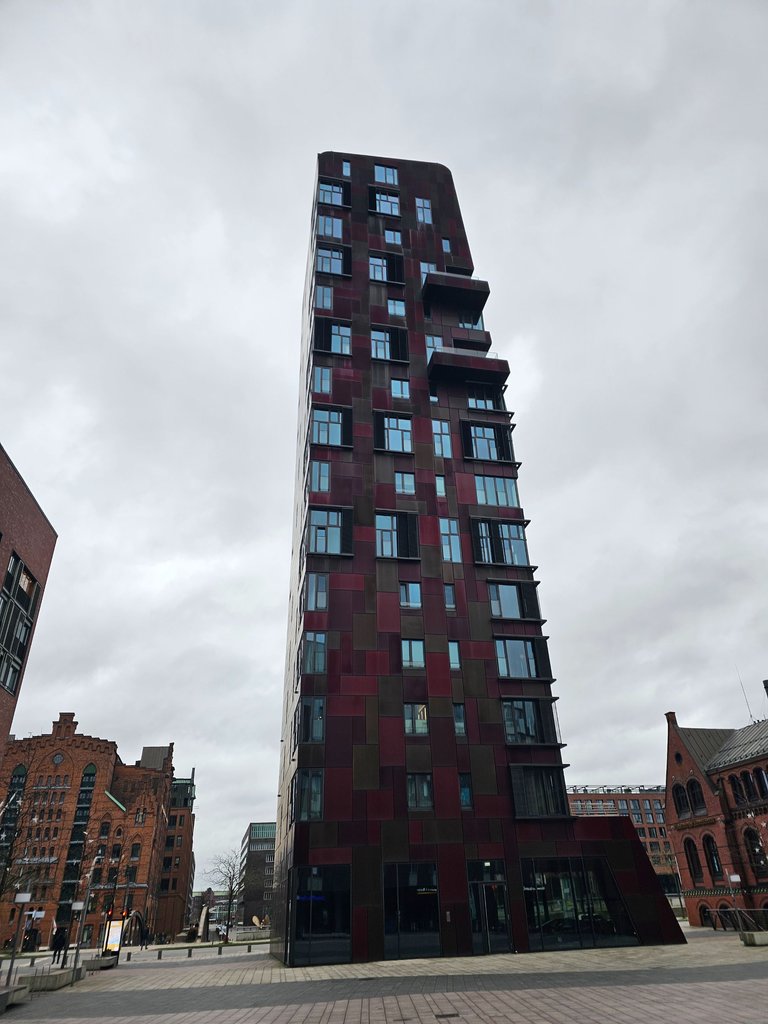
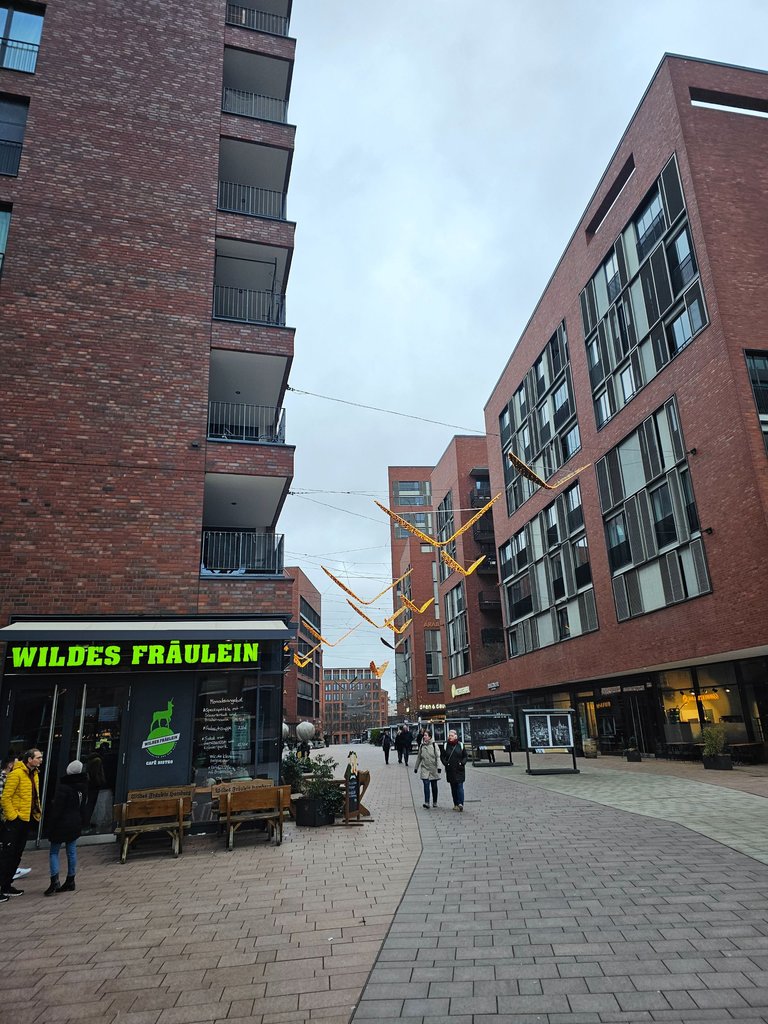
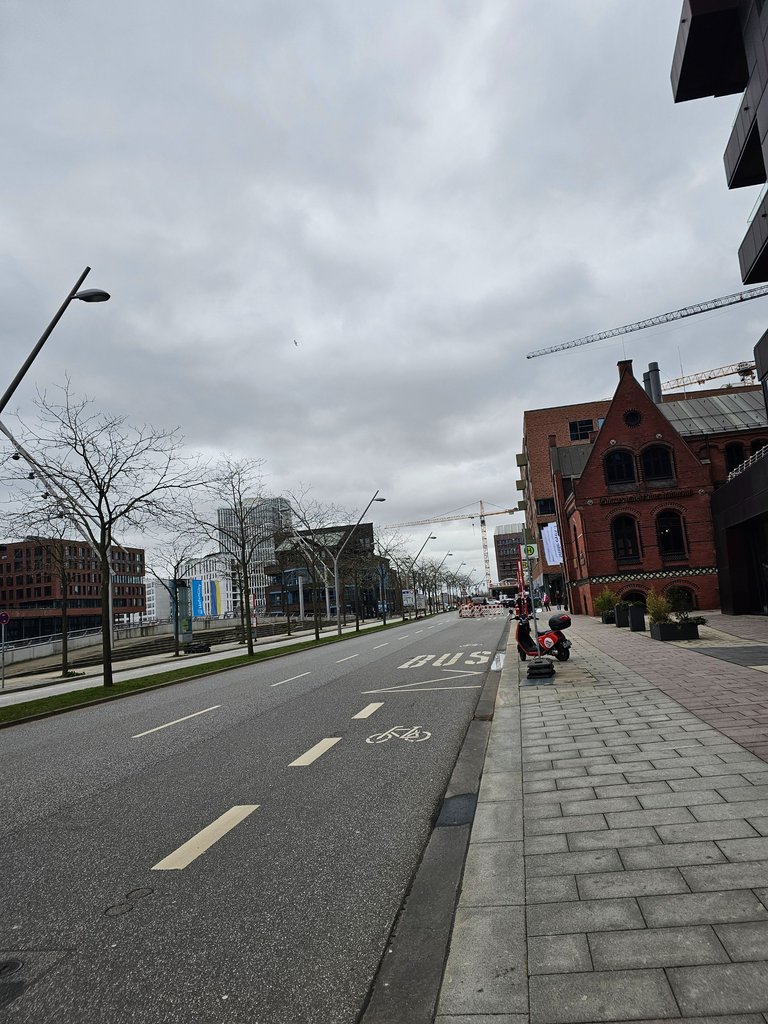
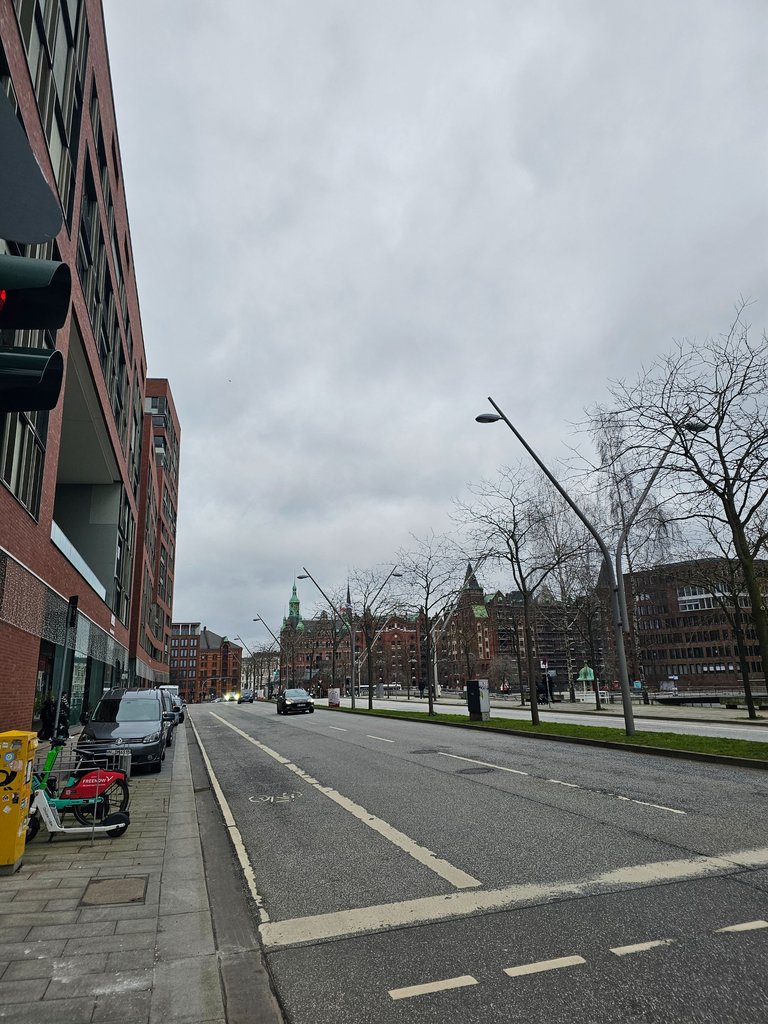
Even if this place does not look historic, it has a very interesting history. This was the place of execution in the 15th century. A statue currently commemorates this.
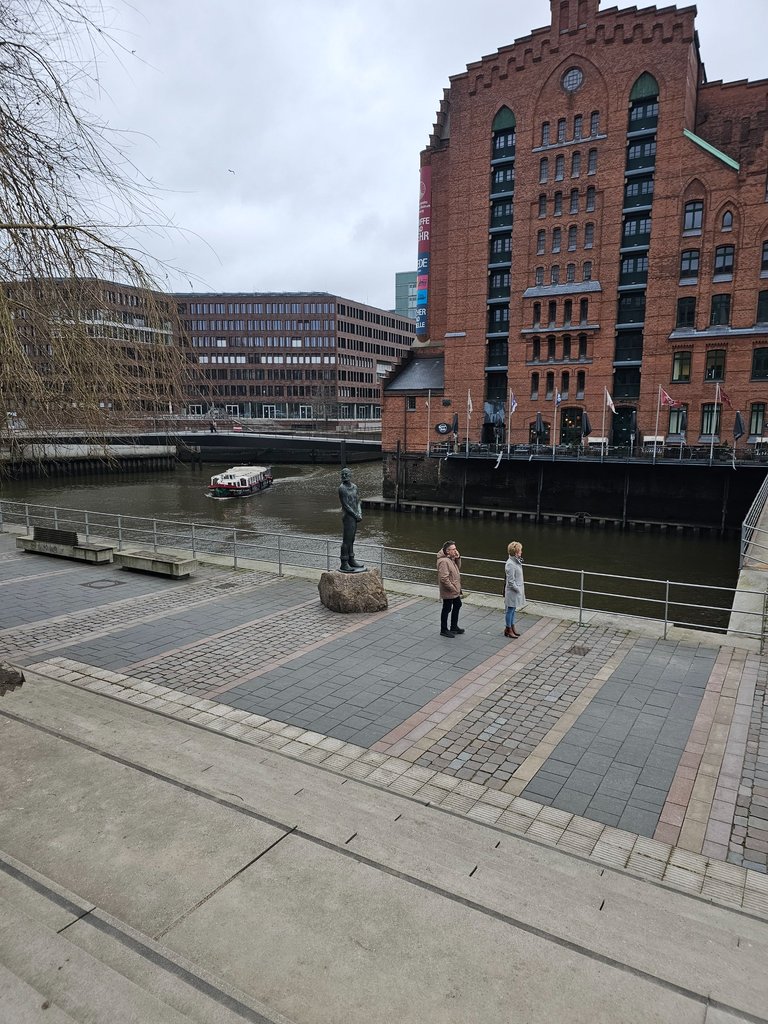
It is the pirate Klaus Störtebecker. There are many stories about him. He is said to have been a kind of Robin Hood. He and his crew targeted the ships of rich merchants and traders sailing in the North and Baltic Seas.
When he was finally captured, he was sentenced to death and was to be beheaded by the sword on this spot.
His last wish was to be executed first. But all the men in his crew whom he could still pass by without a head should be given their freedom. He managed to pass 11 men before the executioner could trip the headless Störtebecker. Unfortunately, the mayor of the time did not keep his word and had all the pirates executed.
A nice gruesome story.
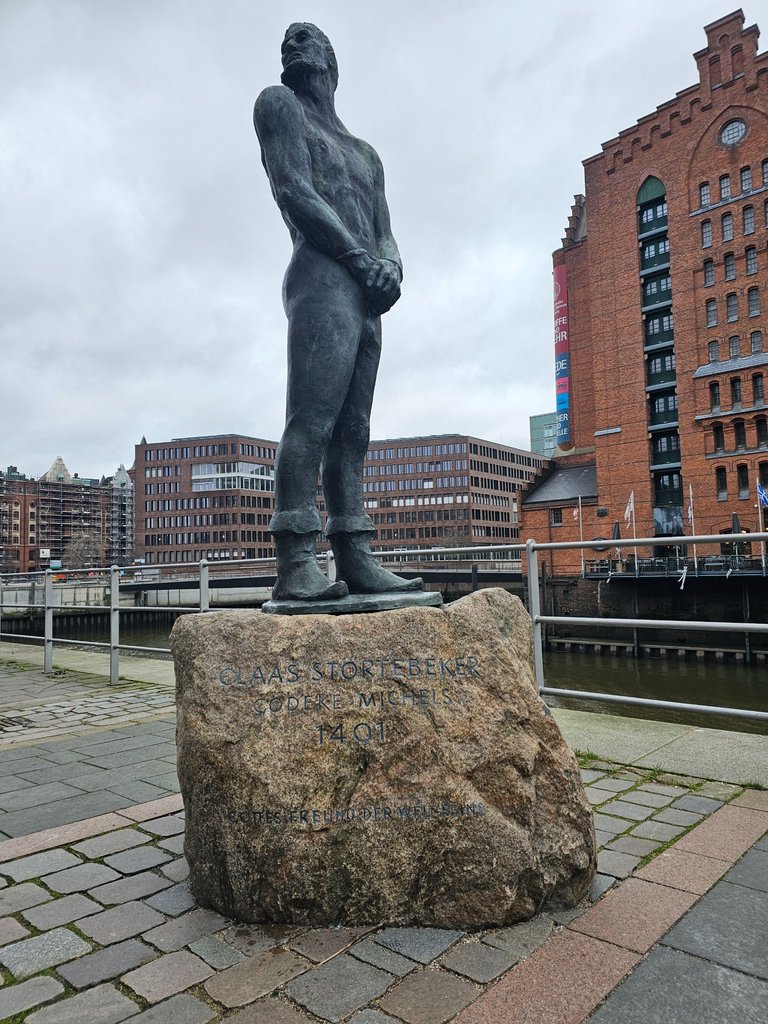
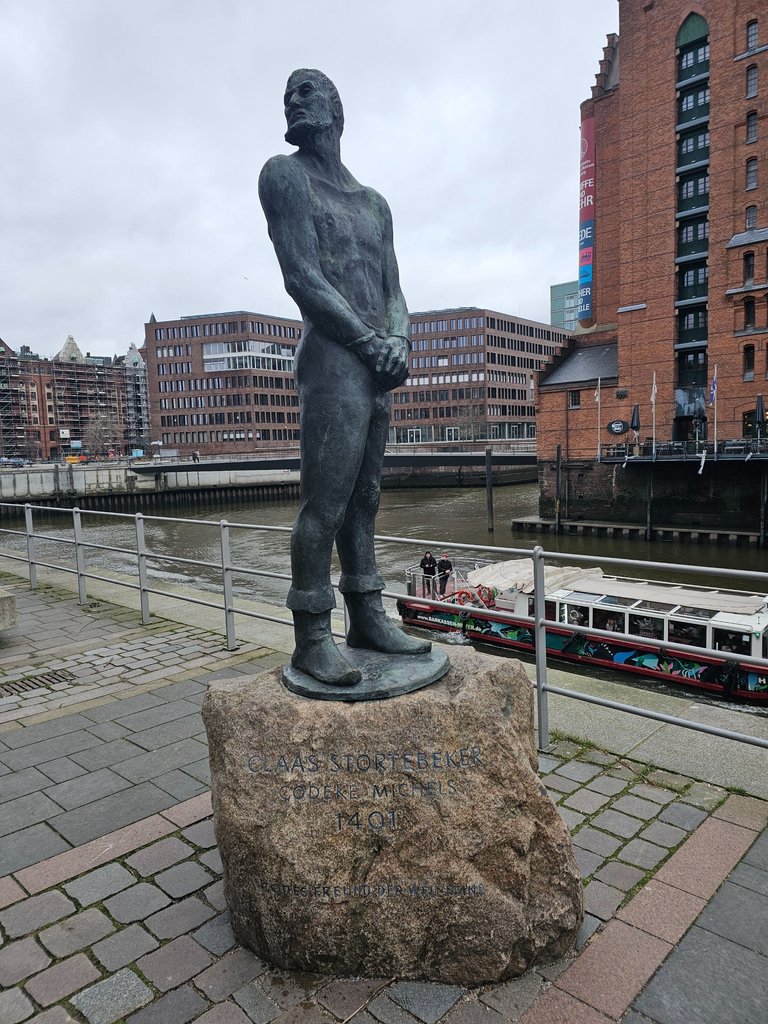
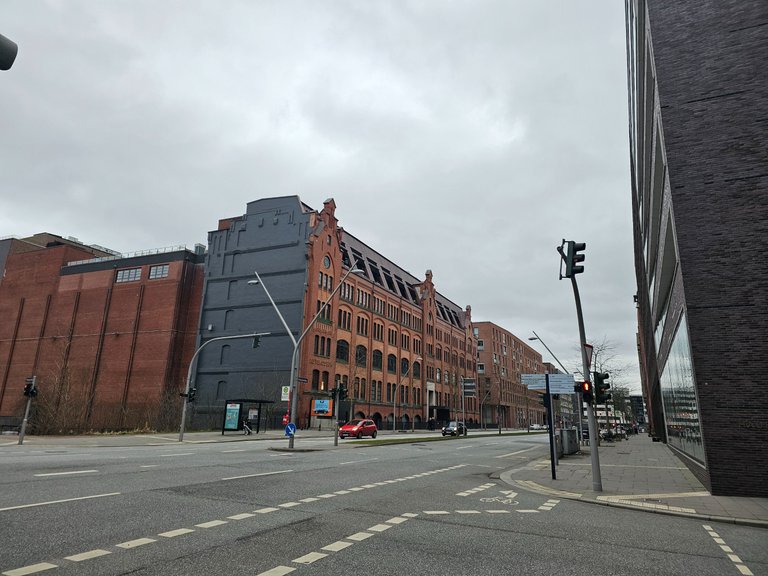
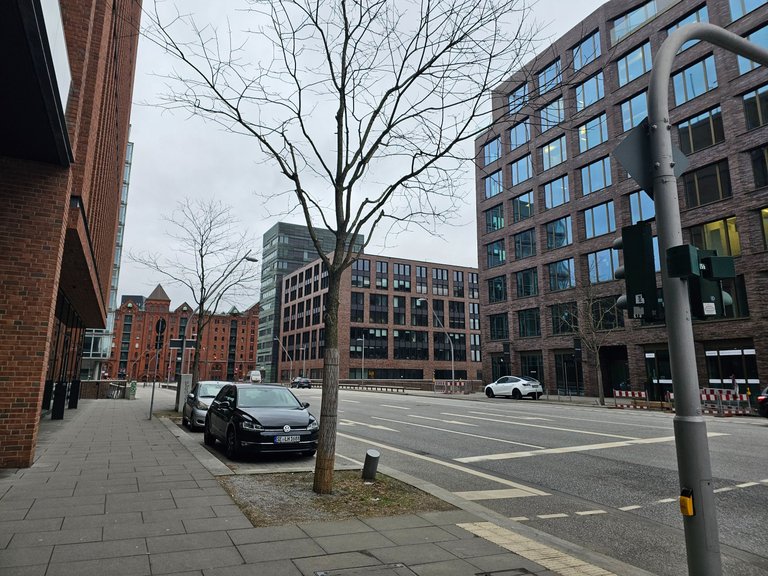
At the end of HafenCity you can see the Spiegel publishing house.
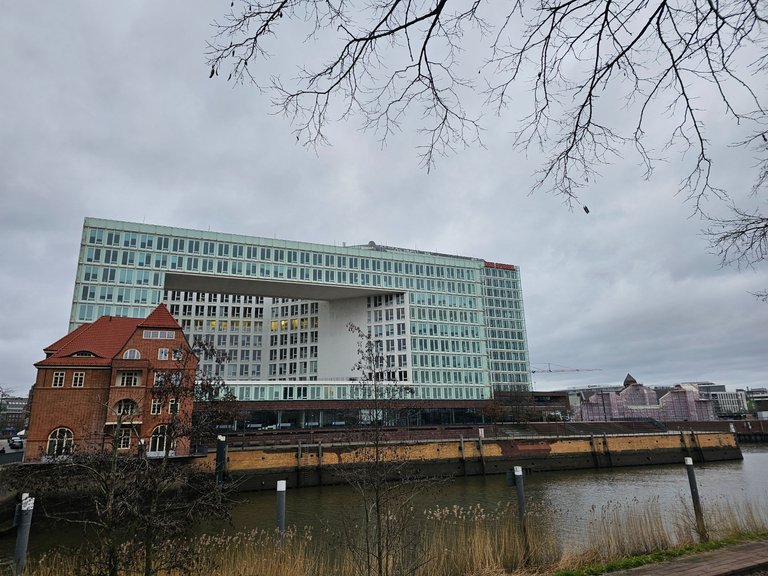
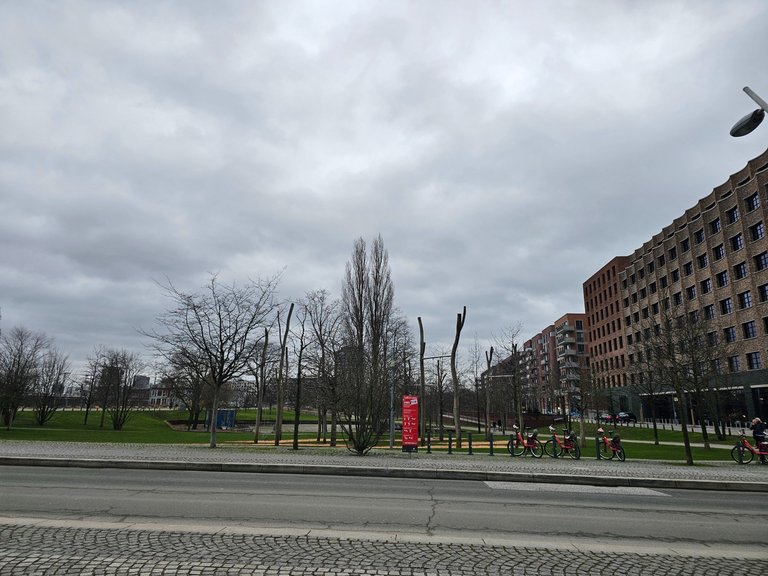
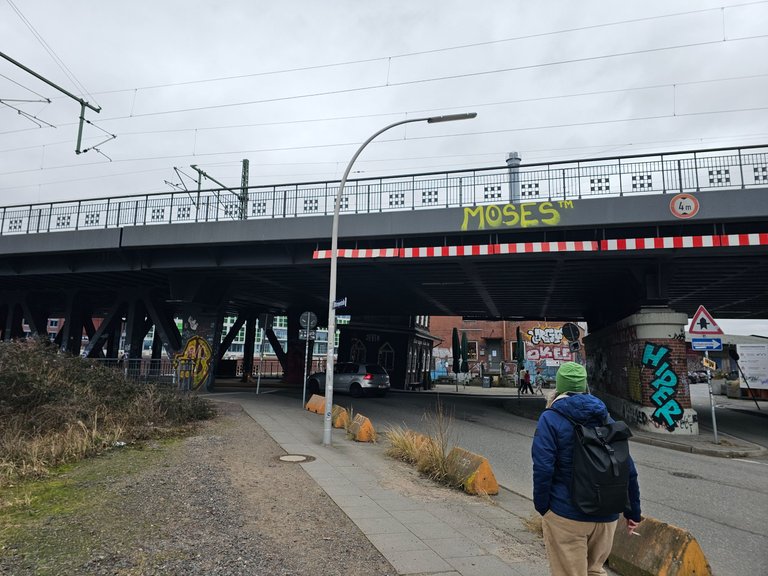
When we were at this bridge, we saw a small house underneath. Or rather little house.

How funny. Inside is a small pub right next to a canal. We actually wanted to go in there, but the pub was closed.
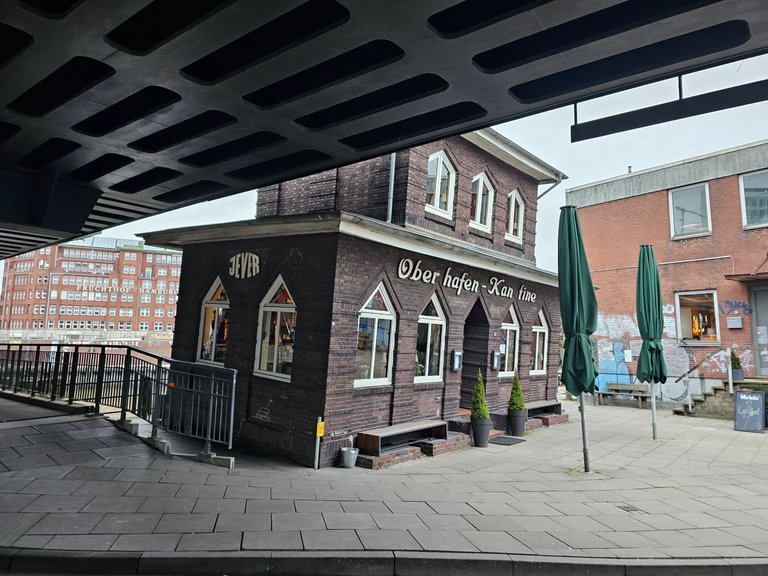
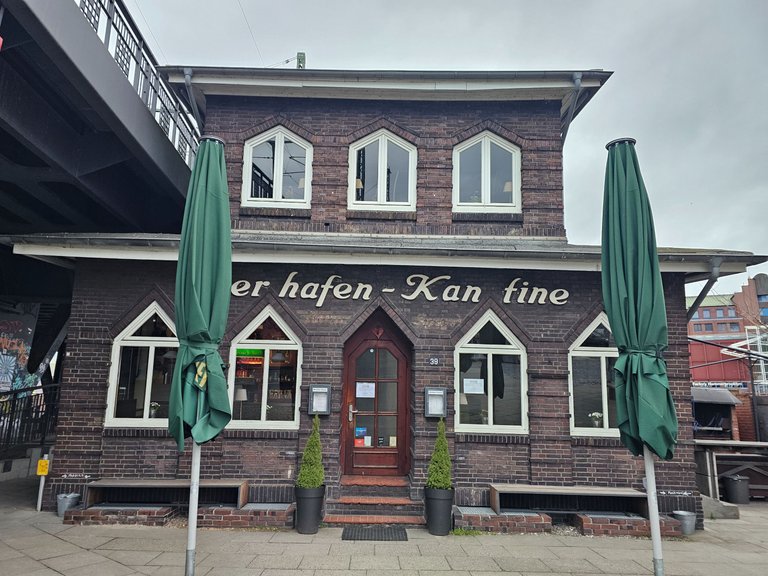
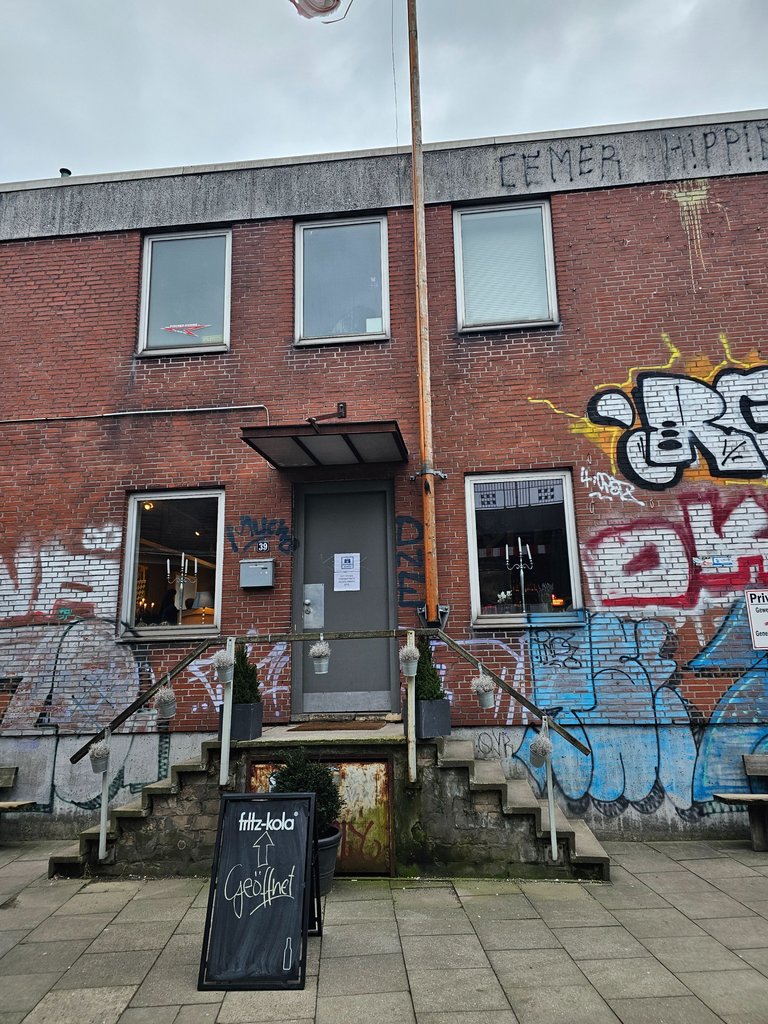
In front of this small pub there was a white marker showing how high the flood rose here on 29.10.2017. This house was probably badly affected.
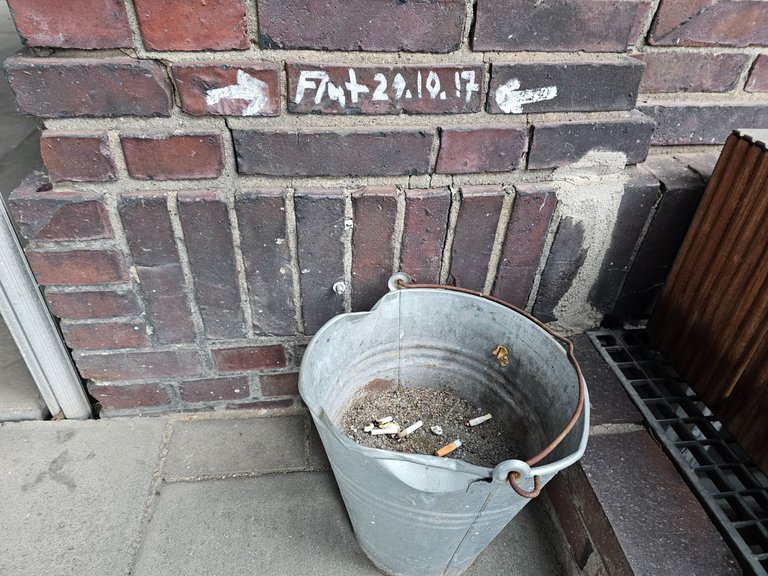
Here you can see how far away the canal actually is.
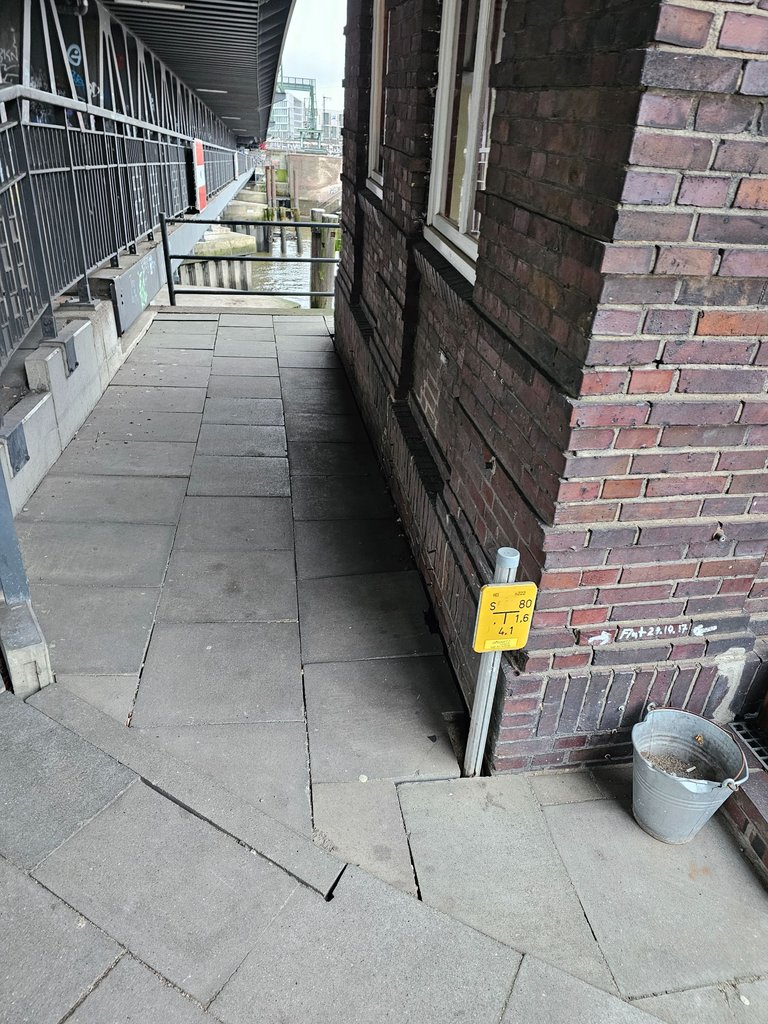
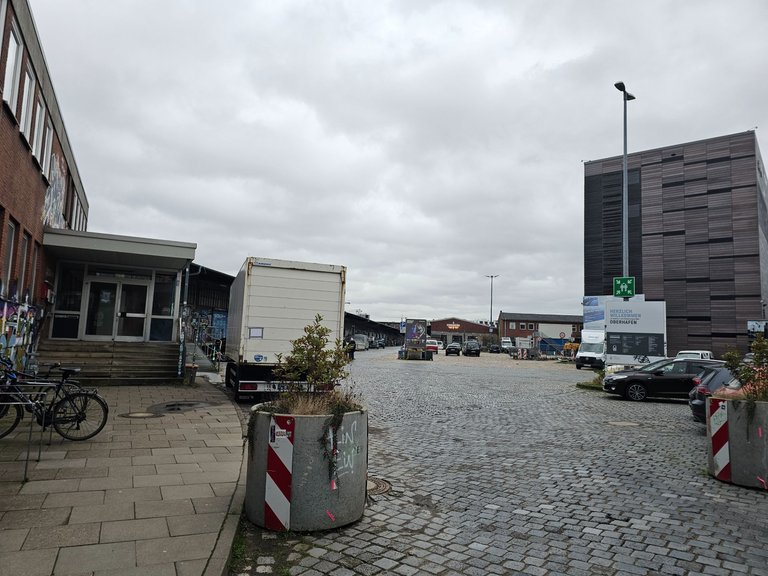
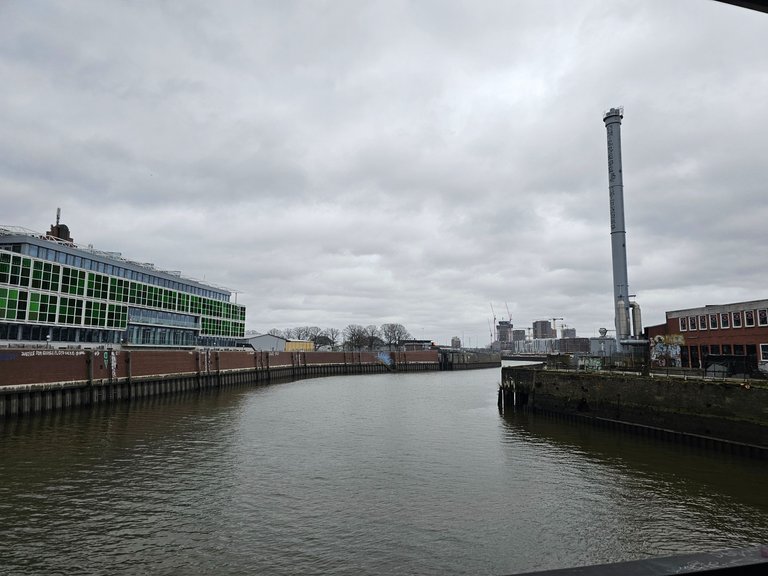
This is also Hamburg. On a busy bridge, a few young people have probably dressed up for TikTok and the like with a dance video.
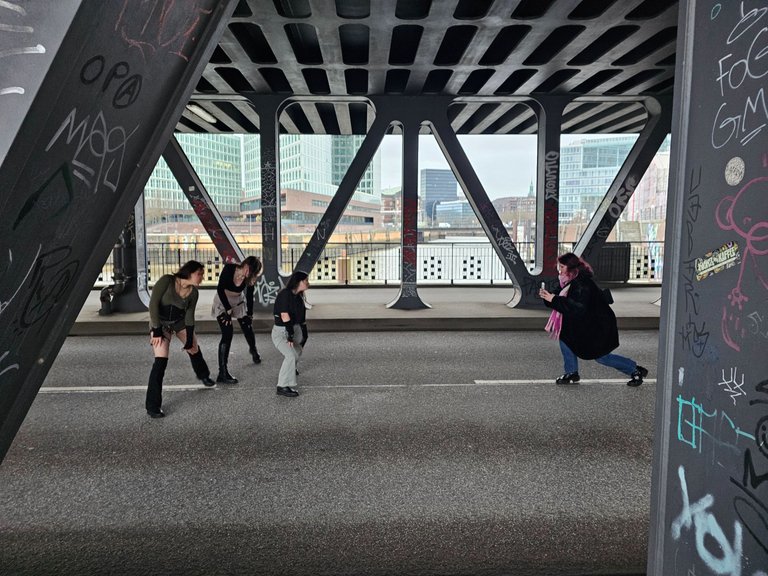

There is a dungeon in Hamburg. I love these museums. London Dungeon, Amsterdam Dungeon and Hamburg Dungeon. We booked a slot and went in there.
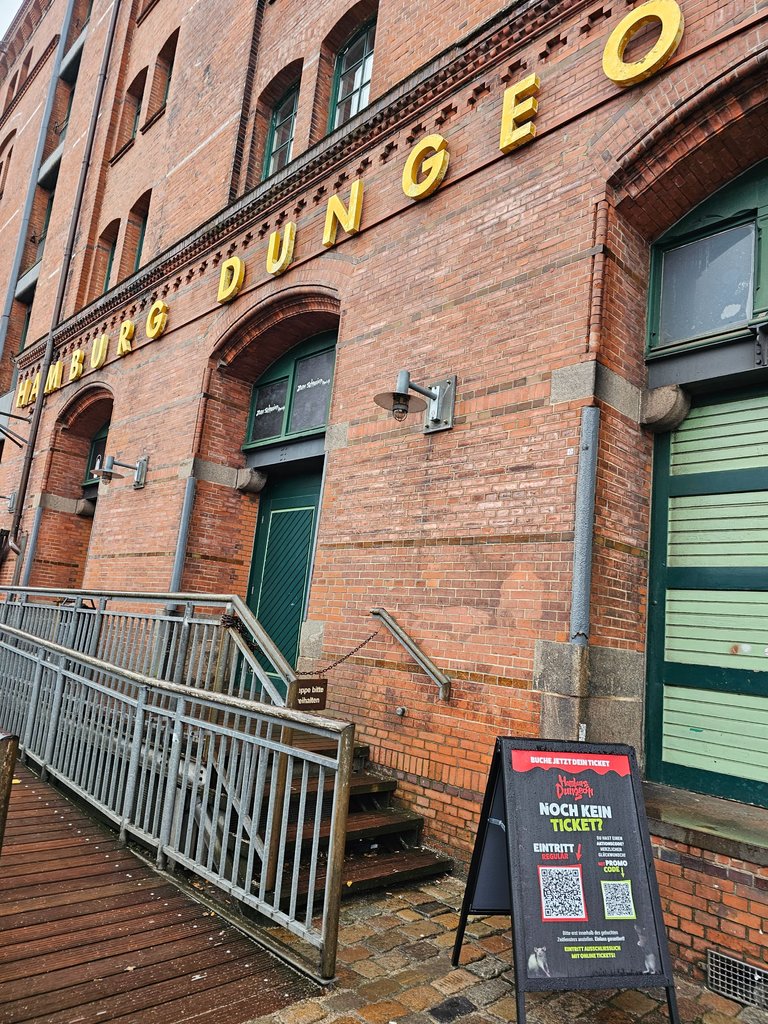
Unfortunately, we found out right at the beginning that this was a guided tour and that it lasts at least 75 minutes. However, we only had 60 minutes and had to cut the tour short at the entrance. Too bad. We'll make up for it next time.
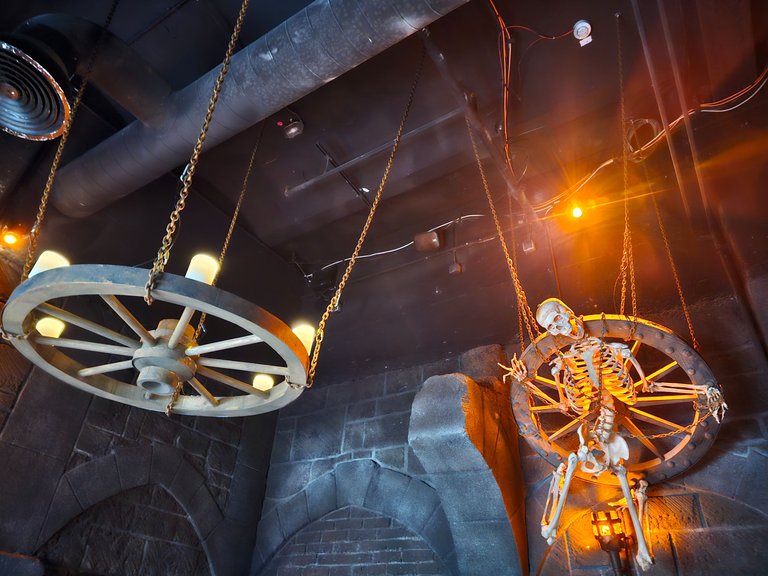
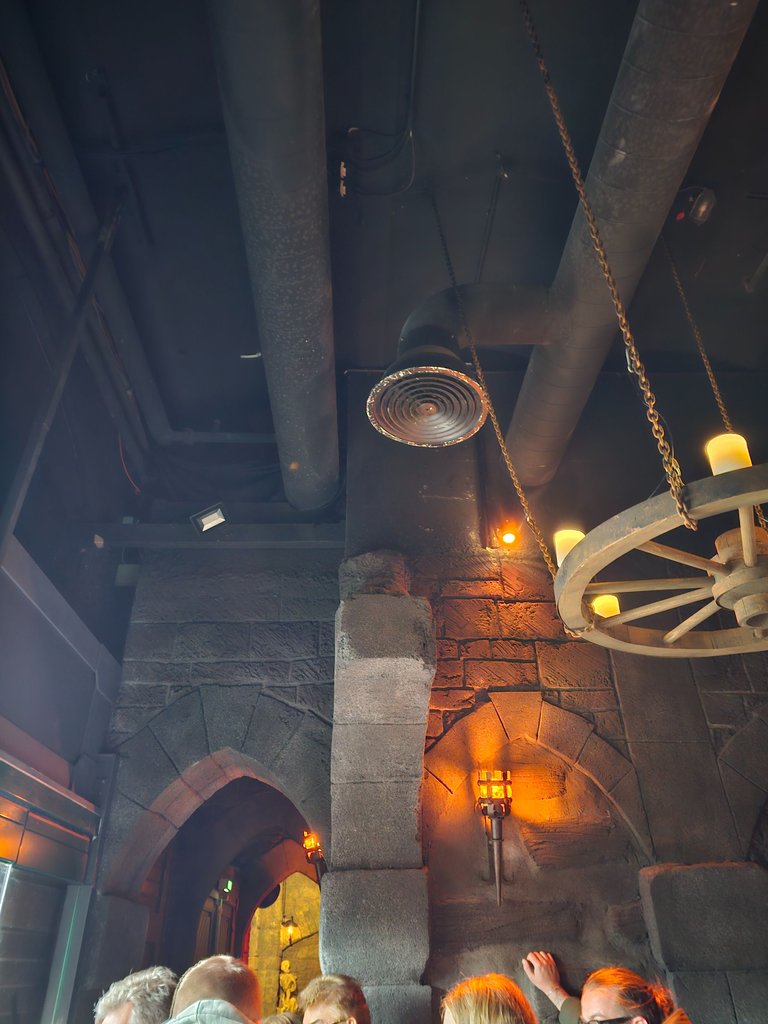
Afterwards we left HafenCity and went back to the old town.
So if you're in Hamburg, take a few hours for this Fourth and check it out.

Hamburg hat in den letzten Jahren ein neues Viertel erstehen lassen.
Die HafenCity mit der Speicherstadt.
Die Speicherstadt gibt es schon sehr lange und ist sehr aufwendig umgestaltet worden. Als bekanntestes Bauwerk dort, wurde die Elbphilharmonie erbaut.
Aber auch der Rest ist nicht weniger Sehenswert. Man kann jetzt streiten, ob das alles sinnvoll ist, aber man sollte es auf jeden Fall bei einem Besuch in Hamburg anschauen.
Es wird aber wohl noch mindestens 15 bis 20 Jahre dauern, bis alles steht, was man aktuell noch geplant hat. Und ob wirklich alles noch vollendet wird, wird man sehen. Der Elbtower ist ja schon wieder in den Schlagzeilen, weil man nicht wirklich weiß, wie und ob es weiter geht.
Die österreichische Signa Holding wird das wohl nicht mehr finanzieren können, aber wie es halt mit Hamburg so ist, steht irgendwie sicher die Stadt als Geldgeber da.
Aktuell soll es 950 Millionen kosten.
Wenn ich jetzt die Kostenexplosion von der Elbphilharmonie als Maßstab nehme, werden das am Ende ungefähr 10 Milliarden Euro sein. Macht ja nix. Auf jeden Einwohner in Hamburg würden dann 5431 Euro an Kosten zukommen. Wenn wir das auf alle Bundesbürger in Deutschland verteilen, muss jeder nur 125 Euro zahlen. Quasi ein Schnäppchen. Dafür haben wir dann einen Turm, in dem wahrscheinlich eine Bank sitzt, in die nur Menschen dürfen, die genug Kapital haben. Also wohl nicht ich. Dann möchte ich dass meine 125 Euro auf die anderen 80 Millionen Deutsche verteilt wird.
Na ja, ich schweife ein wenig ab. Kommen wir zurück zum Thema.
HafenCity:
Offiziell wurde die HafenCity 2008 eröffnet. Sie liegt im Bezirk Hamburg Mitte und gesteht aus dem Gebiet Große Grasbrook und Speicherstadt.
Dieser Teil der Stadt ist 157 Hektar groß und es sollen bis 2030 Wohnungen für 14000 Personen entstehen, 3000 Hotelzimmer und Arbeitsplätze bis zu 45 000 Menschen. Man rechnet ferner auch damit, dass pro Tag ungefähr 50 000 Kunden und Touristen dort vorbeischauen werden.
Wer Hamburg noch vor der Jahrtausendwende kennt, kann sich sicher an die alte Speicherstadt erinnern. Backsteingebäude und verlassene Lagerhallen waren damals dort zu bestaunen. Die Backsteinbauten sind zwar immernoch da, aber mittlerweile werden die Gebäude nach der Sanierung auch genutzt.
Im 15 Jahrhundert war dort auch der Richtplatz, auf dem der Pirat Klaus Störtebecker hingerichtet wurde. Dazu später mehr.
Wenn man vom Hafen und den Landungsbrücken dort hinläuft, kommt man an dieser Polizeistation vorbei.

Hier bekommt man schon einenguten eindruck, was dort entstanden ist.

Der Großteil der Backsteingebäude ist erhalten geblieben und wurde oder wird saniert. Die Strassen sind erneuert worden.


Ewas was auf dem ersten Blick gar nicht auffällt, sind die Fußgängerwege im ersten Stock. An dieser Straße kommt man ein paar Meter über dem Straßenverkehr einfach an den Häusern entlang durch einen Großteil der Stadt.

Das war sehr beeindruckend, dass man wirklich ohne auf Autos acht geben zu müssen, von A nach B kommt. Auch Brücken sind dafür extra für Fußgänger gebaut worden.


Für mich als Radfahrer war das ein fantastisch zu sehen, wie auf neuen Straßen die Fahrradwege in einer Innenstadt angelegt werden können. Wie man sieht, ist der Fahrradweg fast schon breiter als die Straße für Autos.

Zwischen den alten Backsteinhäusern führen Kanäle, die man mit einer Brücke überqueren kann. Früher sind hier wohl die Schiffe gefahren und haben ihre Waren ausgeladen.


Jetzt sind Büros und Wohnungen dort entstanden.

Das hier ist die Grenze von HafenCity/Speicherstadt und der Innenstadt wie sie schon immer war.

Architektonisch geht es in der HafenCity fast in alle Richtungen. Neben dem Backsteinhäusern gibt es auch futuristisch anmutende Gebäude.
Je nachdem, was einem mehr gefällt.

Je weiter man läuft, desto mehr ändert sich das Stadtbild. Das hier ist ungefähr in der Mitte der HafenCity.


Hamburg war in meinen Jungen Jahren, als es noch eine Berliner Mauer gab und die Hauptstadt Deutschland noch Bonn hieß, die Stadt in der man sein musste.
Heute versucht man mit diesem Viertel wohl wieder an die damalige Zeit anzuknüpfen. Ich muss allerdings gestehen, dass dieses Viertel fast wie ausgestorben wirkte im Vergleich zu den anderen Gegenden von Hamburg.

Mein Erklärung dafür ist, dass hier einfach alles zu teurer erscheint. Es ist halt nicht langsam gewachsen, sondern aus dem Boden gestampft.

Alles wirkt sauber aber eben nicht lebendig. Das wird wohl noch einige Jahre dauern bis es soweit ist.
Allerdings denke ich, dass es hier zum Wohnen einfach zu teuer ist. Reiche Schnösel beleben keine Stadt, indem sie in ihren Luxusappartements hausen und nicht auf die Straße gehen.



An dem Eingang dieses Hauses steht Sumatra Kontor. Vielleicht soll das Äussere des Hauses etwas an den Regenwald auf Sumatra erinnern. Unten Braun wie Baumstämme, oben dann hell wie der Himmel.

ÜberseeBoulevard steht auf dieser Strasse. Es fehlen noch die Menschen und Touristen.
Fairnesshalber muss ich sagen, dass wir an einem Sonntag hier waren. Eventuell ist es an einem Wochentag etwas belebter.






Auch wenn dieser Platz nicht Historisch aussieht, hat er eine sehr interessanter Geschichte. Hier ist im 15 Jahrhundert der Hinrichtungsplatz gewesen. Eine Statue erinnert aktuell daran.

Es ist der Pirat Klaus Störtebecker. Um ihn gibt es viele Geschichten. Er soll eine Art Robin Hood gewesen sein. Er hatte es mit seiner Manschaft auf die Schiffe der Reichen Kauf und Handelsleute abgesehen, die in der Nord und Ostsee unterwegs waren.
Als man ihn letztendlich gefangen genommen hat, wurde er zum Tode verurteilt und sollte auf diesem Platz durch das Schwert enthaupten werden.
Als letzten Wunsch äußerte er die Bitte, als erstes Hingerichtet zu werden. Doch alle Männer seiner Mannschaft, an denen er ohne Kopf noch vorbei gehen könne, solle man die Freiheit schenken. Er schaffte es an 11 Männern vorbei zu gehen, bevor der Scharfrichter dem Kopflosen Störtebecker ein Bein stellen konnte. Leider hielt der damalige Bürgermeister sein Wort nicht und ließ alle Piraten hinrichten.
Eine schöne schaurige Geschichte.




Am Ende der HafenCity sieht man das Spiegel Verlagshaus.



Als wir an dieser Brücke waren, sahen wir darunter ein kleines Haus. Oder vielmehr Häusschen.

Wie lustig. Darin ist eine kleine Kneipe direkt an einem Kanal. Wir wollten eigentlich da rein, allerdings hatte die Kneipe zu.



Vor dieser kleinen Kneipe war mit weißem Stift eine Markierung angebracht, wie hoch die Flut am 29.10.2017 hier gestiegen ist. Dieses Haus war da wohl stark betroffen.

Hier kann man erkennen, wie weit der Kanal eigentlich entfernt ist.



Auch dass ist Hamburg. Auf einer befahrenen Brücke haben sich ein paar Jugendliche mit einem Tanzvideo wohl für TikTok und Co rausgeputzt.


In Hamburg gibt es einen Dungeon. Ich liebe diese Museen. London Dungeon, Amsterdam Dungeon und Hamburg Dungeon. Wir haben einen Slot gebucht und sind dort rein.

Leider mussten wir gleich am Anfang feststellen, dass es sich hier um eine geführte Tour handelte und diese mindestens 75 Minuten dauert. Wir hatten allerdings nur 60 Minuten Zeit und mussten so schon am Eingang die Tour abbrechen. Schade. Beim nächsten mal wird das nachgeholt.


Danach sind wir aus der HafenCity wieder raus in die Altstadt.
Wenn ihr also in Hamburg seid, nehmt euch ein paar Stunden Zeit für dieses Vierte und schaut es euch an.



